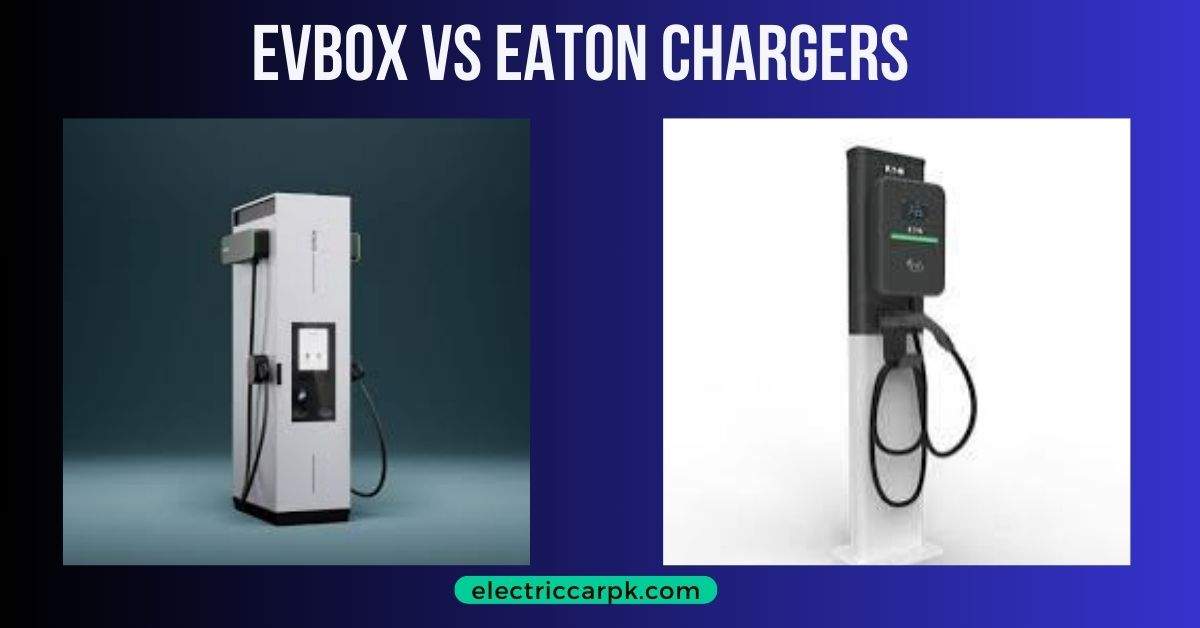The EVBox Charger offers versatile charging capabilities with adjustable power settings, robust construction, and features like plug & play access and integrated energy metering, making it suitable for various installation scenarios.
The Eaton Charger, designed primarily as a UPS accessory, emphasizes reliable battery charging within specific environmental conditions.

| Feature | EVBox Charger | Eaton Charger |
|---|---|---|
| Range Gain per Hour | 35 km | Not specified |
| Key Features | Plug & Play, Single phase 32A supply, Plastic robust IK10, Resists rain IP54 | Battery Charger, UPS Accessories |
| Options | Charging station stand (190cm), Charging station stand to screw (140cm), Type A differential switch 40A 30mA (not included), 40A circuit breaker C curve (not included), Shunt trip 230 / 415V (required for ZE Ready, not included) | Not specified |
| Dimensions | L250 x H600 x P200 mm | H152.4 x W215.9 x D584.2 mm |
| Weight | 11 kg | Not specified |
| Material | Plastic | Not specified |
| Charge Socket | Type 2S | Not specified |
| Connectors | 1 | Not specified |
| Shutter | Yes | Not specified |
| Charge Power | 7.4 kW, 22 kW, Adjustable from 2.3 to 22 kW | Not specified |
| Voltage | Adjustable from 230V to 400V | Not specified |
| Charge Current | 32A | Not specified |
| Mode of Loading | Mode 3 | Not specified |
| Leakage Current Detection | No | Not specified |
| Energy Meter | Integrated and certified KWh Meter MID | Not specified |
| Power Supply | Single phase, Three phase | Not specified |
| Indicator | LED ring | Not specified |
| Access | Plug & Play | Not specified |
| Protection | IP54 (withstands rain) | Not specified |
| Impact Resistance | IK10 (excellent impact resistance) | Not specified |
| Operating Temperature | -25°C to +60°C, humidity 95% max | 0°C to 40°C, 5-95% non-condensing |
| Mounting | Wall mounting (kit supplied) or post (optional) | Not specified |
| Installation | On INOX elbow, wall, On stand | Not specified |
| Wiring | 10 mm² (in accordance with regulations and standards) | Not specified |
| UPC Code | Not specified | 743172091451 |

Add a Comment